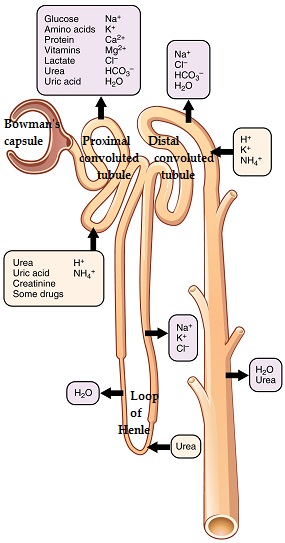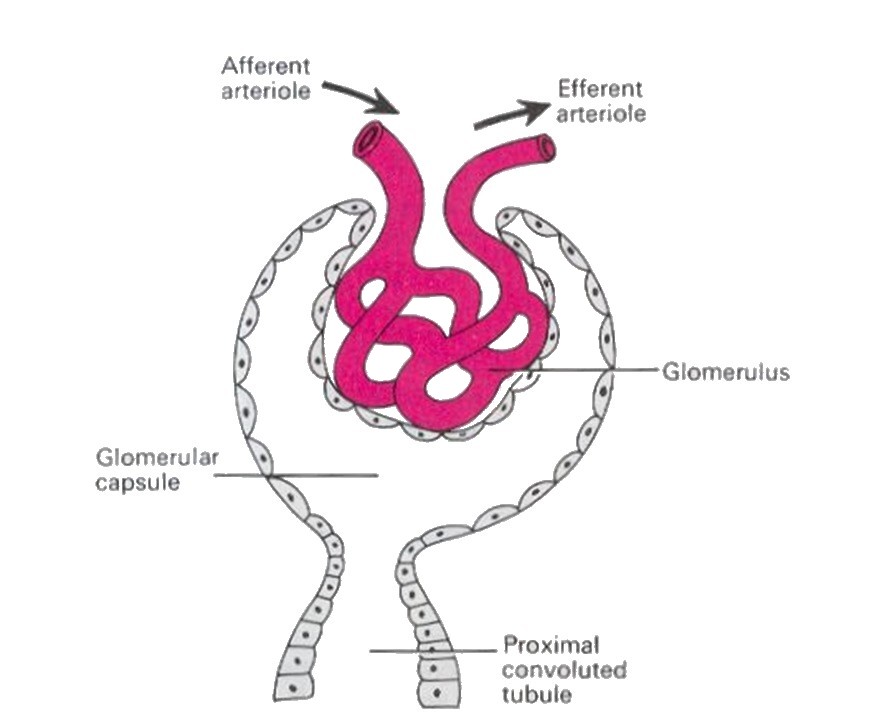Nephron
Nephron
Is the basic structural and functional unit of the kidney (1 to 1.5 million)
Has two parts The renal corpuscle and The renal tubule
Regulates the concentration of water and soluble substances like sodium salts
Filters blood
Reabsorbs what is needed
Excretes the rest as urine.
Eliminates wastes
Regulates blood volume and blood pressure
Renal Corpuscle
One component of nephron
Bowman's capsule - afferent arteriole - Glomerulus - efferent arteriole
Bowman's capsule - double walled epithelial cup - contains the glomerulus, the network of capillaries
The space in the cup - capsular space
Efferent arteriole is narrower than the afferent arteriole so that there is increased pressure in the glomerular capillaries to enable
Filtration of the blood
Renal Tubule
The second component of nephron
Proximal convoluted tubules - lies in the cortex of the kidney close to the renal capsule - contains brush border cuboidal epithelium - reabsorbs 2/3 of the filtered Na and water, glucose and aminoacids
Secretes ammonia, creatine
Loop of Henle - Thin descending part reabsorbs water passively, concentrates urine - Thick ascending part reabsorbs Na, K and Cl - and makes the urine less concentrated
Distal convoluted tubules - simple cuboidal epithelium - no brush border - actively reabsorbs Na and Cl - its permeability to water is influenced by antidiuretic hormone - secretes ammonium and hydrogen ions - forms juxtaglomerular apparatus
Collecting Ducts
The CD runs through the cortex into the medulla and opens into the renal papilla - cuboidal and columnar epithelium - the final segment of the renal tubule - reabsorbs Na and H2O, secretesK - influenced by ADH and Aldosterone
The distal convoluted tubules of many nephrons converge onto a single collecting duct.
Many collecting ducts join to form papillary ducts.
The papillary ducts drain into the minor calyces
* * * * * * * * * * * * * *
Note: What is special about the glomerular capillaries ? They are the only capillaries in the body that are located between two arterioles, rather than between an arteriole (incoming blood supply) and a venule (drainage of blood from the capillary).
The fluid that has passed through the distal convoluted tubules is drained into the collecting duct (far left-hand-side of the diagram above). are typically about 30 papillary ducts per renal papilla (the renal papillae being the tips of the renal pyramids - which point towards the centre of the kidney). At each renal papilla the contents of the channels through which the fluid passes, via the major calyx, into the centre of the kidney - called the renal pelvis






